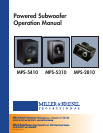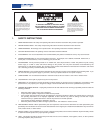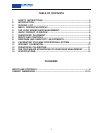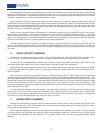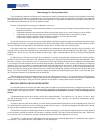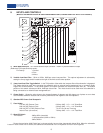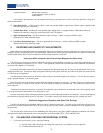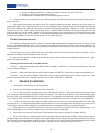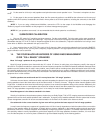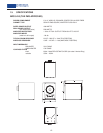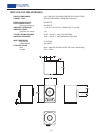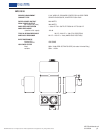
Methodology For Placing Subwoofers
The low frequency response and efficiency of a subwoofer are heavily influenced by the acoustics of the playback environment.
More specifically, the response is influenced by the room’s dimensional ratios, types of construction and location of the subwoofer
within that environment. You can significantly improve the subwoofer’s in-room response and efficiency by experimenting with var-
ious subwoofer placements until you find an optimum location.
Here are a few guidelines for placing the subwoofer in your room.
• Every acoustic space is unique and experimentation is an important key to finding the best possible location in your
particular environment.
• A subwoofer becomes more acoustically efficient (has greater output) as you move it closer to a room surface.
• A subwoofer will give maximum output and maximum acoustic excitement when it is located in a corner.
• Under certain acoustic conditions corner locations are optimum; in others they can excite
multiple room modes, producing “muddy” or “boomy” sound.
As you walk around your room, be sure to pay careful attention to where the spectral response is smoothest and has the great-
est low frequency extension. Pay special attention to the corners and along the walls. Remember, because the subwoofer is basi-
cally omni-directional, the best spot for the subwoofer may be next to, or behind, the main monitoring area.
It has been found that a subwoofer’s in-room response can sometimes be improved by facing the drivers towards a wall.
Typically, when you place the subwoofer near a wall the sound will couple with the wall and create an extra 3dB of gain. Place the
subwoofer in a corner and you will pick up additional 3dB of gain. Again, experimentation is the key to finding the best possible
location.
An effective way to find the best location for the subwoofer is to start out by placing the subwoofer at the listening position.
Connect an audio source to the input of the subwoofer and play music with good low-end content through the subwoofer. While
the music is playing, move around the room in areas that you think might be good locations for the subwoofer’s final placement.
Try to locate an area that responds well to the music being played by the subwoofer. Listen for even, well-defined, low frequency
response. Once you have settled on a possible placement, move the subwoofer to that location. Experiment with aiming the sub-
woofer directly at the console, or aiming it at a wall or even aiming it along a wall. Once you have found a good placement solu-
tion for the subwoofer, play program material that you are familiar with through the satellites and subwoofer and check the sound
quality. Two-channel material is good for this as the imagery of the phantom center depends upon equal volume from both chan-
nels and phase coherency of the satellites with the subwoofer.
M&K subwoofers generate tremendous energy, so they may vibrate objects close to it. If you hear buzzing or vibrating objects,
make sure to dampen those objects. Rattling, buzzing and other sympathetic resonances can make the subwoofer localizable and
therefore should be avoided. Using a sine wave generator can be helpful in locating these acoustic anomalies.
MPS-2810 SPECIAL INSTALLATION NOTES
An enclosed hardware kit contains four black metal spikes, threaded at one end and tapering to a sharp point at the other. By
mounting these spikes into the threaded inserts mounted in the bottom of the Subwoofer, you can elevate the Subwoofer, and on
carpet, couple it more tightly to that floor. Do not use the spiked feet on hardwood or tile floors. They can damage the floor
surface.
The threaded inserts are found in the four corners of the cabinet's bottom. The inserts are 1/4 - 20, that is, 1/4 inch in diam-
eter and 20 threads per inch. This is compatible with the most spikes, "cones," "tip-toes," etc. offered by manufacturers of spe-
cialized speaker feet.
To properly secure the feet to the cabinet, you must use the provided washer and jamb nut on the threaded portion of the foot.
The washer goes first, with the nut over it, holding the washer securely in place. This prevents damage to the spike and the thread-
ed insert in case something moves the cabinet sideways.
The MPS-2810’s pressure-loaded design allows for maximum coupling to a room because it places its drivers directly adjacent
to room surfaces, whether the cabinet is horizontally or vertically oriented. Feel free to orient the cabinet either way. When verti-
cal, its tall thin look is very attractive, and gives excellent performance when the subwoofer is in a corner.
The cabinet's 17" width allows the MPS-2810 to be rack mounted for professional applications or installations where space is
at a premium. If you want to do this, contact M&K for a rack-mounting kit.
7



